SuperMicro C7H170-M (LGA 1151) Motherboard Review
John Williamson / 9 years ago
BIOS and Overclocking
The C7H170-M’s BIOS is a nightmare show for review purposes as there’s no screen capture feature. Furthermore, the bright blue user-interface causes a huge amount of glare when trying to photograph. Unfortunately, this is the best I could manage even after trying to record the monitor from various angles. In comparison to other motherboard vendors, the SuperMicro BIOS isn’t user-friendly and doesn’t explain variables very clearly. It’s designed for users who feel comfortable around an in-depth BIOS screen and confident with many technical terms.
On the start page, there is a great deal of information about the BIOS version, CPU specification and memory frequency. This is useful if you’re unsure what the system values are at stock settings.
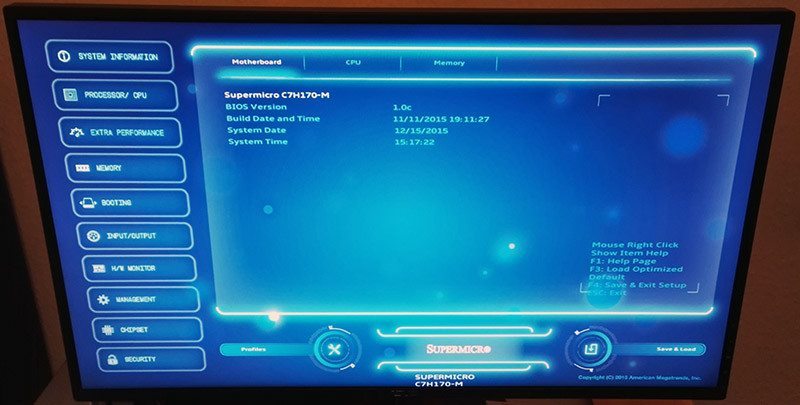
As previously mentioned, the memory tab outlines DIMM capacity, frequency and RC version.
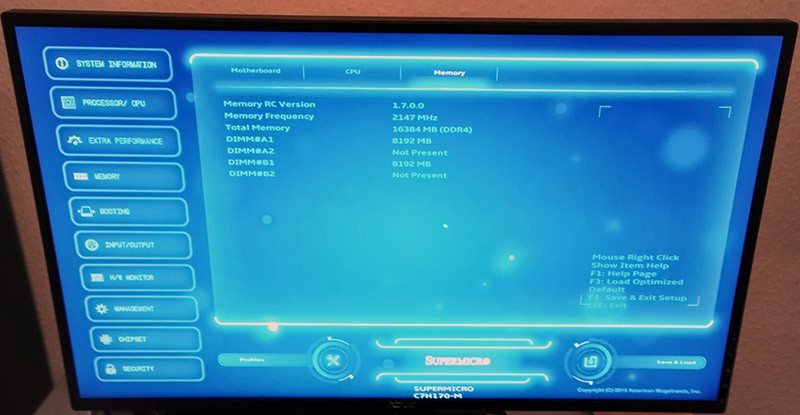
You can access a more in-depth run-down of the CPU if required and find out about its integrated power saving features.
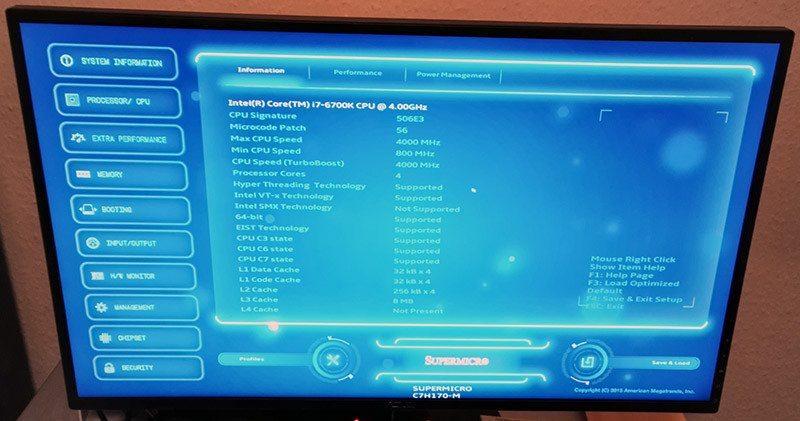
This section isn’t for the faint hearted and provides an impressive selection of tweaks for extreme system tuning. For example, you can force the CPU Flex Ratio to a manual figure and set an overclocking lock. I didn’t spend too much time analysing this area of the BIOS as the overclocking process and enhancements revolves around BCLK changes.
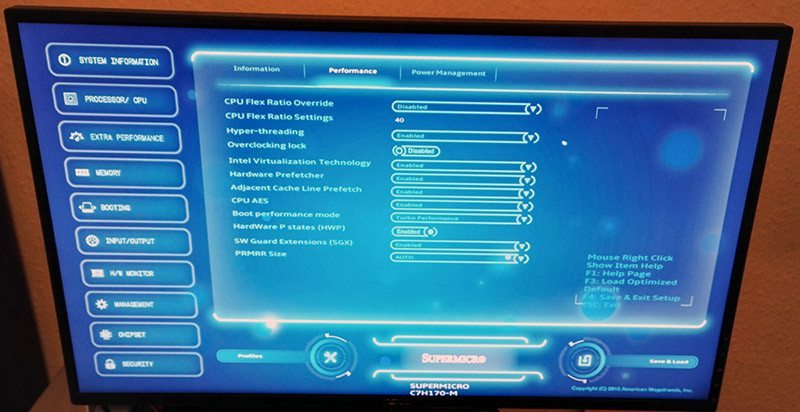
This is the most important tab when trying to overclock on Intel’s H170 platform. Here, you can set the BCLK in multiples of 5 and adjust the Core Voltage Offset to maintain stability. It might also be necessary to increase the System Agent Voltage. This all depends on a number of factors but with the right amount of patience, overclocking via the BIOS shouldn’t pose a problem.
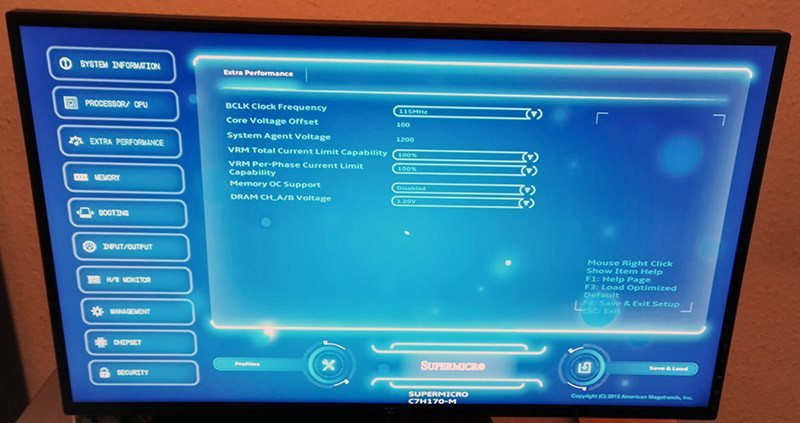
The Boot device tab is useful to organize the boot order of various disk drives. This is a fairly standard addition and works well.
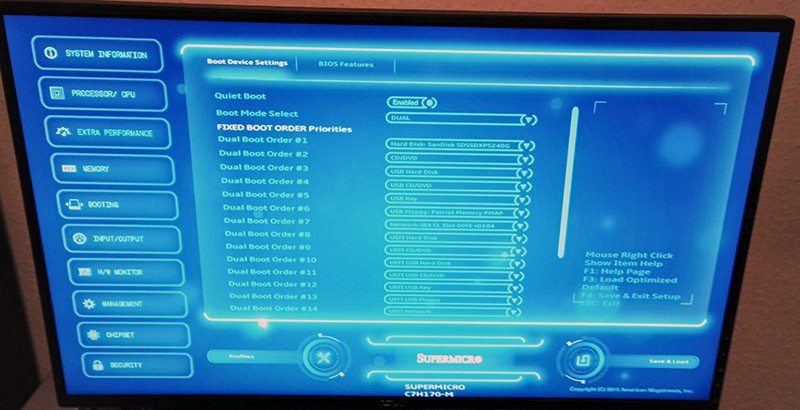
For the more advanced users, it’s possible to monitor system temperatures, fan speeds and individual voltage readouts. This overwhelming number of statistics will almost certainly baffle people who aren’t technically minded. On the other hand, the information helps experts to gauge system stability and find out the impact of a hefty overclock.
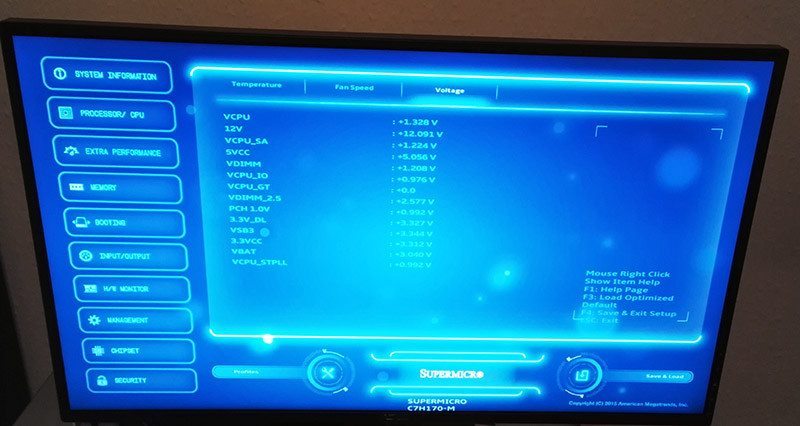
Considering the complexity of this BIOS, I’m pleased to see an encryption tool which only grants access with a secure password.

You can also load and save two profiles. Ideally, there should be more than two, especially when you take into account how the overclocking process is unofficial.
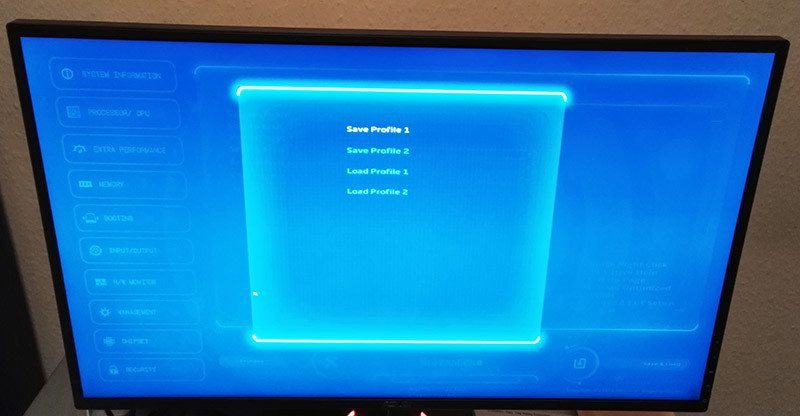
The final page is pretty self-explanatory and contains everything you need to restore the default setup or save manual alterations.
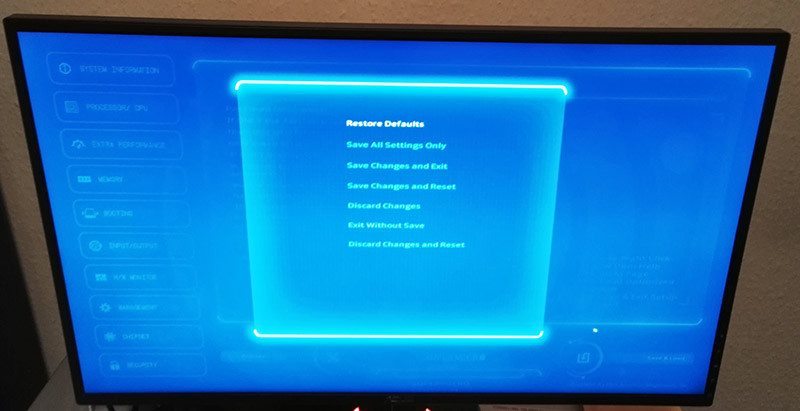
Overclocking
So here’s the moment of truth – contrary to Intel’s chipset limitations, I managed to attain 4.6GHz with a BCLK of 155MHz. Initially, I targeted 4.8GHz with a similar voltage reading to traditional multiplier overclocking. However, this wasn’t possible and despite my best efforts, I couldn’t get the system to post above a 115MHz strap. This was even with the voltage exceeding 1.512V. Once the CPU’s maximum potential was reached, I optimized the vcore back to 1.33V. This is a great result given the improved frequency and very respectable voltage reading.




















